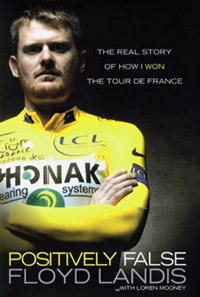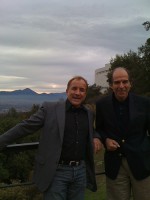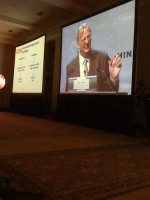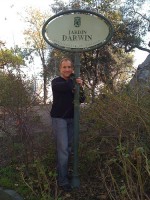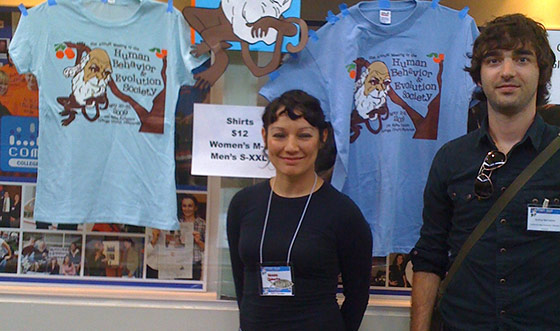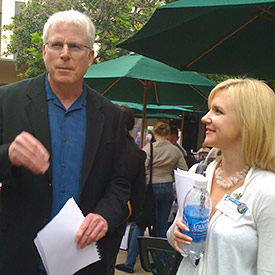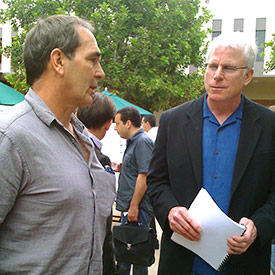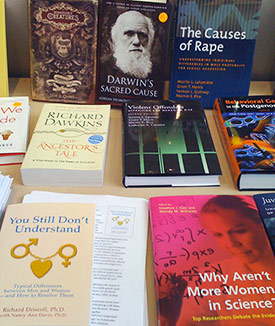Nash Equilibrium, the Omerta Rule, and Doping in Cycling
The Tour de France is underway and it is already shaping up to be one of the grandest and most epic races in the event’s century-long history. If you haven’t seen a stage yet be sure to tune into the Versus Network that covers it every day, with repeat airings all day and evening. Lance is still in contention even after several crashes. In fact, I’ve never seen so many crashes in a Tour before. This event is so hard it is not surprising that, as usual, allegations and suspicions of doping have surrounded the race even before it began. Unfortunately, it appears that doping has long been a part of this — and many other — sports. Here is my explanation for why athletes in general and cyclists (my sport) in particular dope, why race organizations have such a hard time enforcing the rules, and what can be done about it.
In criminal organizations such as the Cosa Nostra in 19th century Sicily and the Mafia in 20th century southern Italy, the “omerta rule” is the code of silence, a tacit agreement among cohort members that the collective violation of the law means if you get caught you keep your mouth shut and under no circumstances cooperate with the authorities. The penalty for an omerta betrayal is ultimate and final — death.
Something like the omerta rule operates in the dark and dirty underbelly of doping in sports, or the employment of performance enhancing drugs (PEDs) against the rules (and in some cases the law), in which a positive test leads to an obligatory statement of shock and denial by the guilty party, followed by a plausible explanation for how the drug mysteriously appeared in the blood or urine, ending in fines paid and/or time served and eventual return to the sport, no names named and no further questions asked.
After testing positive for steroids following his 2006 Tour de France victory, Floyd Landis obeyed the omerta rule, albeit in grander style than most, publishing a bestselling book, Positively False: The Real Story of How I Won the Tour de France, raising upwards of $600,000 for a legal defense fund, and taking his case to sports arbitration. The three-time Tour de France champion Greg LeMond told me in a phone conversation during the arbitration trial that Landis consulted him about what to do next, at which point LeMond encouraged him to come clean. “What would I gain doing that?,” LeMond recalled Landis saying. “You would clear your conscience and help save cycling,” LeMond replied.
Three years later Landis has apparently decided to take LeMond’s advice, confessing during the recent Tour of California that the “real story” of how he — and Lance Armstrong — won the Tour de France is drugs, lots and lots of PEDs: recombinant Erythropoietin (r-EPO) to artificially stimulate the production of oxygen carrying red blood cells, steroids and human growth hormone for recovery and the development of lean muscle mass, and blood boosting, or withdrawing your own blood early in the season and then re-injecting it during the Tour de France to boost red blood cell count with your own blood (thereby sidestepping the test for EPO while gaining a comparable advantage). In published emails Landis defiantly slapped the omerta rule across the face, naming names and providing details:
“I was instructed on how to use Testosterone patches by [Team Director] Johan Bruyneel”
“Mr Armstrong was not witness to the [blood] extraction but he and I had lengthy discussions about it on our training rides during which time he also explained to me the evolution of EPO testing and how transfusions were now necessary due to the inconvenience of the new test.”
Armstrong “tested positive for EPO at which point he and Mr Bruyneel flew to the UCI headquarters and made a financial agreement with Mr. Vrubrugen to keep the positive test hidden.”
“During that Tour de France I personally witnessed George Hincapie, Lance Armstrong, Chechu Rubiera, and myself receiving blood transfusions. Also during that Tour de France the team doctor would give my room mate, George Hincapie and I a small syringe of olive oil in which was disolved andriol, a form of ingestible testosterone on two out of three nights throughout the duration.”
It’s a good thing for Landis that the penalty for an omerta rule violation in sports is not what it is in the Mafia, or else he’d be the Luca Brasi of cycling and sleeping with the fishes. Why did Landis break the code of silence? The answer to this question, along with the larger question of why athletes dope, comes from game theory and something called Nash equilibrium, discovered by the Nobel Prize-winning mathematician John Nash (of Beautiful Mind fame), in which two or more players in a contest reach an equilibrium where neither one has anything to gain by unilaterally changing strategies. If each player has selected a tactic such that no player can benefit by changing tactics while the other players hold to their plans, then that particular arrangement of strategy choices is said to have reached a point of equilibrium.
Here’s how it works in sports. The point of an athletic contest is to win, and players will do whatever they can to achieve victory, which is why well-defined and strictly enforced rules are the sine qua non of all sports. The rules clearly prohibit the use of PEDs, but because the drugs are extremely effective and the payoffs for success are so high, and because most of the drugs are difficult if not impossible to detect, or the tests can be beat with countermeasures, or the governing body of the sport itself doesn’t fully support a comprehensive anti-doping testing program (as in the case of Major League Baseball and the National Football League), the incentive to dope is powerful. Once a few elite athletes in a sport defect to gain an advantage over their competitors, they too must defect (even if they only think others are doping), leading to a cascade of defection down through the ranks.
If everyone is doping there is equilibrium if and only if everyone has something to lose by violating the tacit omerta agreement. Disequilibriums can arise when not everyone is doping, or when the drug testers begin to catch up with the drug takers, or when some cheaters have nothing to lose and possibly something to gain by turning state’s evidence.
Which brings us back to Floyd Landis and Lance Armstrong, who for a decade have been in a state of relative Nash equilibrium. But when Landis lost his savings, his home, his marriage, and his livelihood, he reached a state of disequilibrium, and when he was turned down from even riding in the Tour of California after, according to Armstrong, making threats to the race organizers to let him in “or else,” he apparently decided to make good on his threat.
There is nothing more important for a sporting organization to do than to enforce the rules. If you don’t, athletes will cheat. Anyone who believes otherwise does not understand sports or human nature. As Landis explained in his confessional: “I don’t feel guilty at all about having doped. I did what I did because that’s what we [cyclists] did and it was a choice I had to make after 10 years or 12 years of hard work to get there, and that was a decision I had to make to make the next step. My choices were, do it and see if I can win, or don’t do it and I tell people I just don’t want to do that, and I decided to do it.”
Solutions
The only hope of salvaging professional sports is to change the game matrix. To that end I have five recommendations:
- Immunity for all athletes pre-2010. Since the entire system is corrupt and most competitors have been doping, it accomplishes nothing to strip the winner of his title after the fact when it is almost certain that the runners’ up were also doping. Immunity will enable retired athletes to work with governing bodies and anti-doping agencies for improving the anti-doping system.
- Increase the number of competitors tested, in competition, out-of-competition, and especially immediately before or after a race to prevent counter-measures from being employed. Sport sanctioning bodies should create a baseline biological profile on each athlete before the season begins to allow for proper comparison of unusual spikes in performance in competition.
- An X-Prize type reward to increase the incentive of anti-doping scientists to develop new tests for presently undetectable doping agents, in order to equalize the incentive for drug testers to that of drug takers.
- Increase substantially the penalty for getting caught. A 50-game ban on Manny Ramirez last year was a joke. No Major League player will take that seriously as a deterrent. Professional cycling has a two-year ban, which is a good start. But it’s not enough.
- A return of all salary paid and prize monies earned by the convicted athlete to the team and/or its sponsors and investors, and extensive team testing of their own athletes.
Cycling is ahead of all other sports in implementing these and other preventative measures, and still some doping goes on, so vigilance is the watchword for fairness along with freedom.


